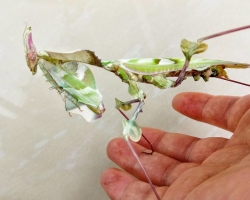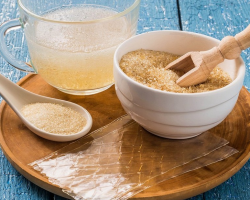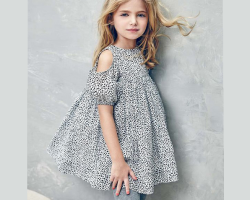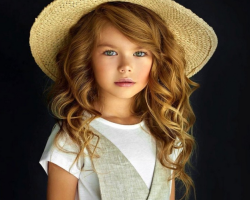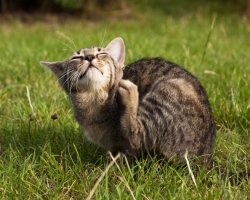In the past few years, popularity on aquarium shrimp is constantly increasing. This is due to the fact that the containers with the inhabitants do not take up much space.
Content
- The main types of shrimp for home breeding in the aquarium
- How do shrimp behave in the aquarium?
- Features of choosing a aquarium for shrimp
- The necessary equipment for shrimp aquarium
- When to run shrimp into the aquarium?
- Compatibility of shrimp in the aquarium with other types
- Features of nutrition
- Features of propagation of shrimp in the aquarium
- The causes of the death of shrimp in the aquarium
- How to save sick shrimp in the aquarium?
- Video: TOP aquarium shrimp
Shrimp require less care compared to fish. If you belong to the category of people who prefer to breed shrimp, study the features of their content. Read more about this in this article.
The main types of shrimp for home breeding in the aquarium
Often, freshwater species are chosen for the house that differ in compact dimensions. All varieties are characterized by shades and colors. More about the best views will be described later.
Neocaridines
- This species is suitable for those who are just starting to breed shrimp at home. You can buy wild varieties or derivatives that were bred on their basis.
- Most often, cherries or cherry neocaridines are found.

In addition, you can place in the aquarium:
- "White snowflake";
- "Canary";
- "Blue pearl";
- "Orange Sakura."
Classic representatives of this species are almost colorless. However, after some time, individuals can be painted in other shades, including scarlet, lemon, blue and green. It depends on the quality of the soil, lighting and diet.
- The more saturated the shade of the soil, the brighter the color of individuals will be. On average, neocaridines grow to 2-3 cm in length.
- Therefore, large fish should be excluded from the aquarium, which will eat shrimp.
Amano
- This variety is also unpretentious in care. It constantly destroys algae that grow in the aquarium. If you plan to breed Amano, fill the container with unusual water. The best option would be salty water in which caviar ripens.
- The shade of individuals depends on the diet. If plant food prevails, shrimp will be light green. In another case, they will be red. In the upper body there is a strip of golden hue.
- They may also be present Spots and strokes. If there are spots, then you have a male. Strokes indicate the female. Females grow up to 7 cm, and males - up to 3.5 cm.
Macrobrachium
- The peculiarity of this species is that its representatives can live even in hard water. Moreover, they belong to the category of predators, and can attack other residents of the aquarium.
- The length of the body is 25 cm. The color can be different: blue, black or yellow.
Babaulti
- Prefers to be in fresh water. This type is compact. Individuals grow up to 4 cm. The color can be different: brown, green, red, blue and orange.
- The front of the shell is bent down. There is a longitudinal strip on the back. On average, individuals live for 5 years.

Cardinal
- The shade of individuals is quite attractive - scarlet in all its manifestations. There is a body throughout snow White spots, which create additional contrast. Sometimes white points have a blue edging.
- The limbs are red, with the exception of the front ones, which have a white hue. The maximum body length is 2 cm. On average, this species live no more than a year.
How do shrimp behave in the aquarium?
- If you only plan to engage in the removal of shrimp at home in the aquarium, first study the features of their behavior. Often they are enough active. They prefer to move along the bottom and algae that grow in the aquarium. Sometimes individuals swim in water. Swims in groups are carried out during the "walk" of females. They release pheromones in the water that attract males.
- If you replace water, there is strong activity of individuals. At the time of pouring water, the shrimp thinks that it began to rain. Therefore, they will rise up, and practically “fly” along the container. This is a completely normal phenomenon, and there is nothing to fear. If other fish live along with shrimp in the aquarium, you need to be afraid. After all, many fish consider crustaceans.
- If the behavior of individuals is strange, it can say on the presence of diseases or about water pollution.

If you have not replaced the water for a long time or exceeded the permissible number of individuals to the existing volume, dangerous impurities will appear, among which:
- ammonia substances;
- nitrites - acceptable no more than 0.2 mg per 1 liter of water;
- nitrates-an allowable number of not more than 80-100 mg per 1 liter.
If crustaceans are motionless, it is likely that they were poisoned. Therefore, you need to immediately take measures. To begin with, replace 25% of water with clean. If you notice that the shrimp is muffled, do not panic. This is a completely normal phenomenon. It is impossible to remove the educated skin. Shrimps will eat her.
Features of choosing a aquarium for shrimp
- As already mentioned, shrimp do not need special care. Therefore, there are no clear requirements for choosing an aquarium. Preference should be given to wide and low containers, the volume of which is from 10 liters. Given that shrimp prefer to walk along the bottom, it is better if its area is large.
- If you breed neocaridine and other compact individuals, the aquarium should be designed for 30 liters. Large individuals should be contained in more voluminous containers. If you provide optimal conditions for shrimp for shrimp, this will accelerate the propagation process. Therefore, it is better to buy more voluminous options in advance so that all individuals fit in them.
The necessary equipment for shrimp aquarium
- In addition to the main capacity for shrimp, you will need to buy special filter. You can find it in the nearest pet stores. Choose models in which the filter material is made of a sponge. They are more budgetary in value, so ideal for beginners. In this case, they are easy to clean.
- If there are no filters spongy material, You can’t use them. After all, shrimp will be sucked inward, and die.
- You should also buy lamp, water heater and thermometer. There are aquariums on sale, on the cover of which the lamp is already built in. However, you can buy separate devices, the spectrum of which is “warm” or “white” light. This will contribute to a more saturated shrimp color. Make sure day daylight hours are at least 7 hours a day.
- Buy thermometers And small heaters. This will maintain the optimum water temperature. Otherwise, shrimp will not multiply, and will die. You should also buy gravel.
- There should be fractions from 2 to 5 mm. Ordinary sand, the fractions of which are about 1 mm. Do not forget to buy special soil for shrimp. There are such devices in the nearest animal stores.

When to run shrimp into the aquarium?
- First you need to prepare an aquarium. It is washed in tap water. The main thing is not to use substances that contain chemistry. Pour gravel inside and pour water. Previously, it needs to be prepared. Using a special air conditioner, exclude chlorine, chloramine and other harmful substances from it. Put the filter right away and run it. If at first the water is clouded, do not worry. After some time, it will again become transparent. After put the thermometer.
- Within 24 hours, the water will reach the indicator +30 ° C. After starting plants. Plant options with elongated stems from behind. Plants with sockets should be in the middle, and compact species should be in the foreground. If you plant moss, place it from near the glass. Remember that moss is an important detail. After all, shrimp use it for shelter and food.
- After a day, hook the crustaceans. To begin with, they acclimatize. To do this, place the shrimp in the package, and lower it into aquarium water for 2-3 hours. After you can run them into a container. After 7 days, the first substitution of water is carried out (about 15% of the total volume). After this process should be carried out every week. Clean the soil several times a month using a siphon.
- After 20 days you need test water on nitrates, acidity, nitrite and ammonia. Special tests are purchased in pet stores. The normal PH level is 6-7.5. There should not be nitrites and nitrates in water at all.
Recommended water indicators:
- neutral or alkaline (from 6.8 to 8.5 pH);
- stiffness - from 6 to 25;
- temperature - from +15 ° C to +30 ° C.
Compatibility of shrimp in the aquarium with other types
- Shrimp belong to the category bottom. It is not forbidden to populate them with the fish. The exception is large and carnivorous fish, because predators will eat crustaceans.
- Compatibility must be determined by the size of the container, water parameters and the number of algae. If you doubt the choice, you can consult with an employee of a pet store or experienced aquarists. The best neighbors for shrimp in the aquarium will be fish that feed on plants (Neons, iris, guppies, microse and notebooks).
- It is better to exclude from the aquarium into which shrimp are hooked, like fish as guri, swordsmen, scales, discus, cichlids, catfish and goldfish. If you put several types of shrimp in one container in order to further increase their number, it is better not to smell the fish aquarium at all.

Features of nutrition
- If you land in the aquarium seaweed, shrimp will never face a feeling of hunger. Try to buy the food that includes chitin in addition. This will provide a normal mere. You need to add food to the diet of shrimp no more than twice a week. Be prepared that the process of water pollution will accelerate. Therefore, it will be necessary to more often change water, as well as siphan the soil.
- Shrimp prefer to enjoy pumpkin, carrots, oak leaves, zucchini, cucumbers and almond leaflets. Make sure that the shrimp does not overeat. Racotic should eat everything for an hour. Remove the remains right away so that the water does not deteriorate.
- There are already ready -made shrimp feed options for sale. They can have the shape of powder or granules. They include everything necessary for crustaceans. They do not spoil the quality of water, and also help improve the color of individuals. If you settled shrimp in hard water, special food will be a necessity. In addition, it will accelerate the process of typing and reproduction.

- If you bought expensive varieties of shrimp, they need to feed them with nutrient Japanese feeds. This is the best option for caridine, black and red crystals. The shrimp is not averse to enjoying unripe nettle. To do this, you need to tear the leaves from the bushes that grow in places with pure ecology. It is better to do this in April or May.
- Give preference leavesthat are formed on the tops. After they need to be poured with boiling water for a quarter of an hour. This will remove bacteria, and soften the nettle so that it is easier for shrimp to eat it. However, nettle should not be used as the basis of the diet. It can be given as a treat.
- You need to feed shrimp 1 per day. Some aquarists believe that it is better to do this every other day. It is recommended to do 1 day a week. Remember that overeating is one of the main causes of shrimp death.
Features of propagation of shrimp in the aquarium
In order to propagate shrimp in the aquarium at home, several conditions are required:
- high -quality water, which meets all requirements;
- stability;
- regular food, which includes chitin;
- the presence of males and females in one container.
Propagation begins when individuals grow up to 1 cm in length. Neocardines are ready for mating when a bright yellow spot is formed on their backs. This is an indicator of the presence of caviar in need of fertilization. After caviar, a month is carried. After this time, young individuals will appear.
The causes of the death of shrimp in the aquarium
Very often, aquarists are faced with the death of shrimp. This can happen for various reasons. More about them will be described later.
Water pollution
- If chlorine and chloramine are formed in the water, the shrimp will die. Some people advise to defend water so that chlorine disperses.
- The peculiarity of chloramine is that it is almost impossible to bring it. Therefore, you will have to use dechlorators. Chlohramine is able to accumulate in water, which will soon lead to the death of crustaceans.
The presence of ammonia or nitrites
- If the number of these substances in the aquarium is exceeded, the shrimp will die. It should be noted that they are often at the bottom.
- It is here that the waste of their life accumulates.
Low acidity
- If you pour water supply or distilled water into the container, this can provoke a sharp drop in PH level. If it is below 6, shrimp will cease to be active.
- It is better to regularly conduct tests to determine the level of pH. So you will understand when you need to raise it. In some sources, information is found that an increase in PH can be carried out using baking soda. However, this is not the best idea, because sharp jumps will provoke the death of crustaceans.
- It is better to give preference to stones (shells or crushed coral). They will increase PH level gradually.

How to save sick shrimp in the aquarium?
- If you notice that the shrimp became less active, this means that they have health problems. They need to be moved into a separate container filled with clean and defended water. You can also take water water and clean it with the help of air conditioning. Literally after a few days, individuals will return to normal, and they can be moved to a common aquarium.
- To clear the container in which the sick individuals were, clean the soil with a siphon. After replace the water (about 1/3 of the total volume). The filter needs to be washed.
Now you know, under what conditions should be contained aquarium shrimp. As you can see, there is nothing complicated. It is important to maintain the cleanliness of the container, as well as control the diet and the quality of the water.
Useful articles on the site:
- Does fish love to valerian
- How to care for homemade fish
- Tilapia fish
- Which sea fish is the most useful
- Fish without bones and scales


